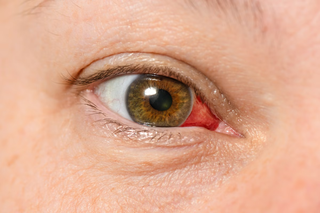A red eye is usually nothing to worry about and often gets better on its own. But sometimes it can be more serious and you'll need to get medical help.
What to do if you have a red eye
Until your eye is better:
- try not to touch or rub your eye
- do not wear contact lenses
Ask your pharmacist if:
- there's anything you can do to treat your eye yourself
- you can buy anything to help, such as cleaning solutions or eye drops
- you need to contact a GP
Non-urgent advice: Contact a GP if:
- your eye is not any better after a few days
- your child is under 2 years old and has a red eye
If your GP cannot find the cause of your red eye, they may refer you to an ophthalmologist (eye specialist) for tests.
Urgent advice: Ask for an urgent GP appointment if:
- your baby has red eyes and they're less than 28 days old
- your eye is painful and red
- you have a red eye and wear contact lenses - you could have an eye infection
Emergency action required: Call 112 or 999 or go to your nearest ED if you have a red eye and:
- you have any changes to your sight, like wavy lines, flashing or loss of vision
- it hurts to look at light
- you have a severe headache and feel sick
- your eye or eyes are very dark red
- you have injured or pierced your eye
- something is stuck in your eye (like a piece of glass or grit)
Do not drive to the emergency department. Ask someone to drive you or take public transport.
Causes of a red eye
Lots of different things can cause a red eye.
Common causes and their symptoms include:
- a burst blood vessel (subconjunctival haemorrhage) - a bright red area in the white of your eye
- conjunctivitis - gritty or burning feeling, sticky eyes
- dry eyes - sore, blurry or watery eyes
- blepharitis - itchy, sore or red eyelids
- ingrowing eyelashes - feels like there's something in your eye
- eyelid problems - swollen, drooping or twitching eyelid, or a lump on your eyelid

Content supplied by the NHS and adapted for Ireland by the HSE
